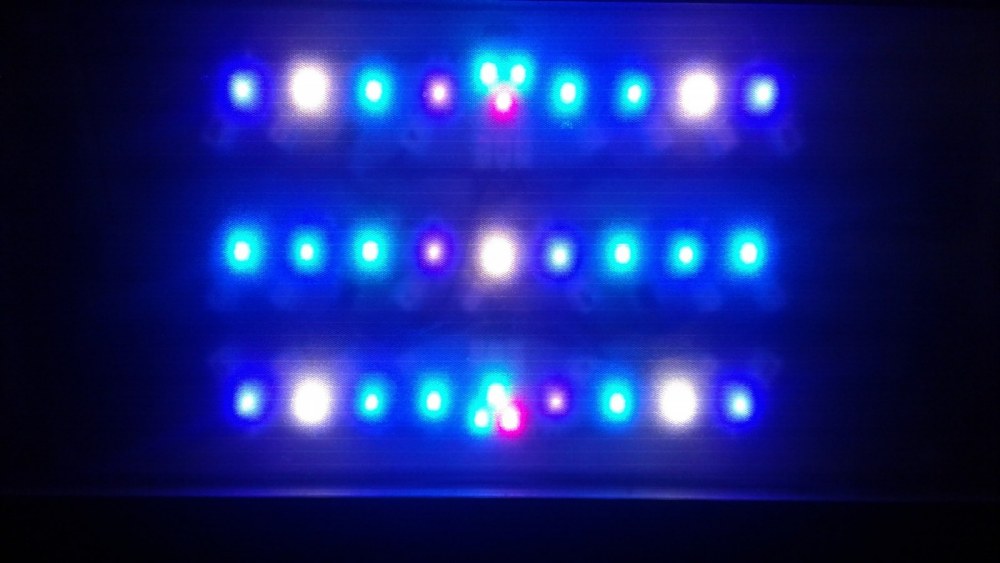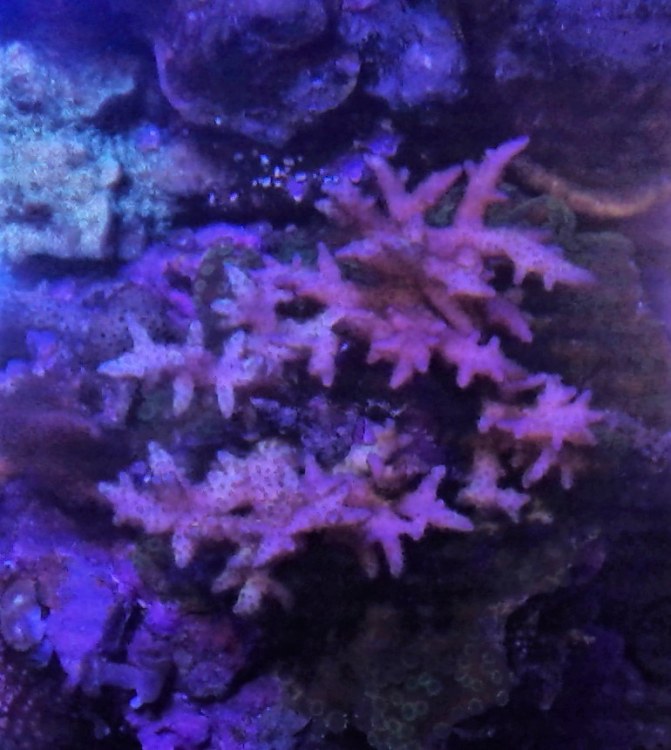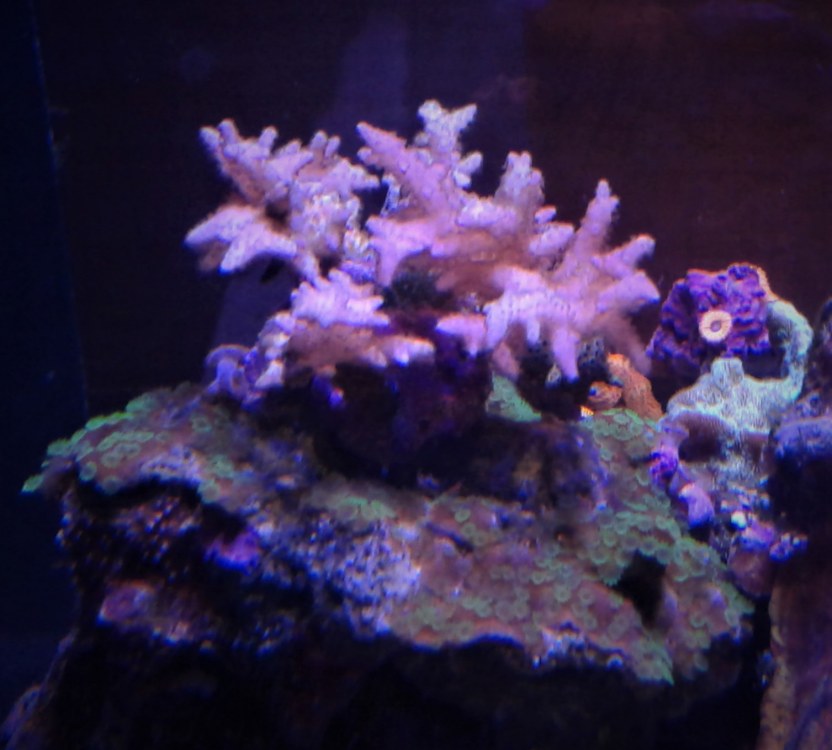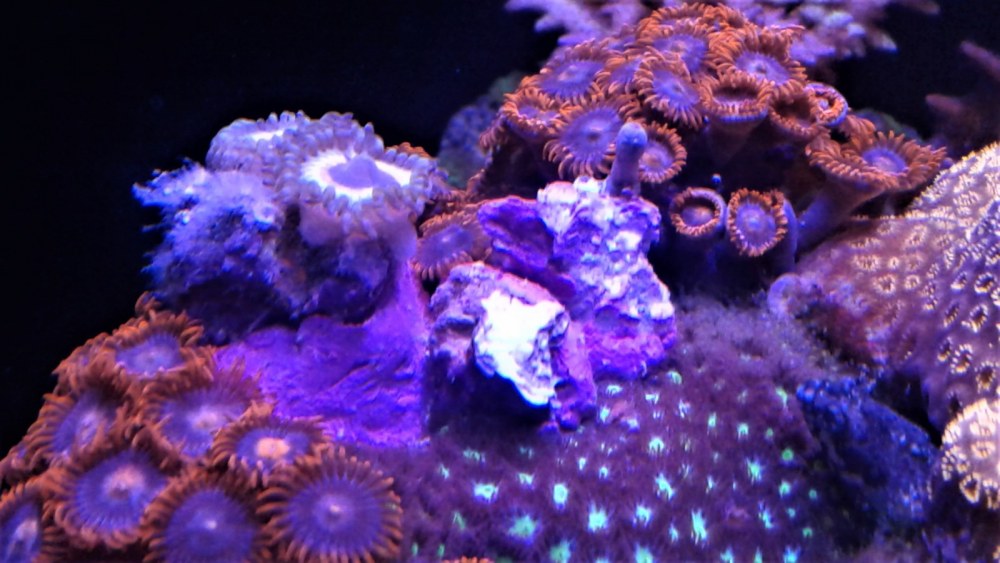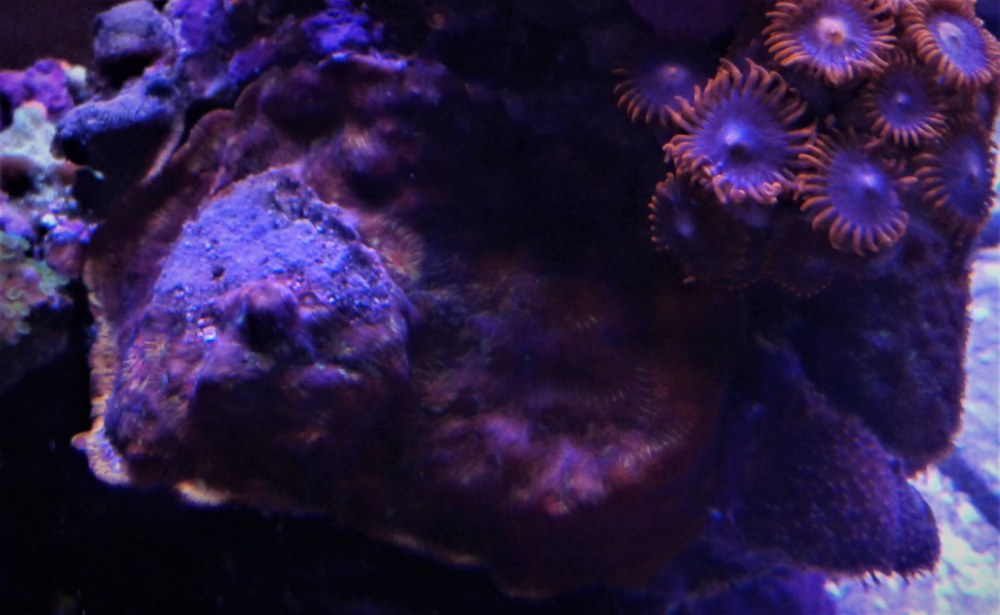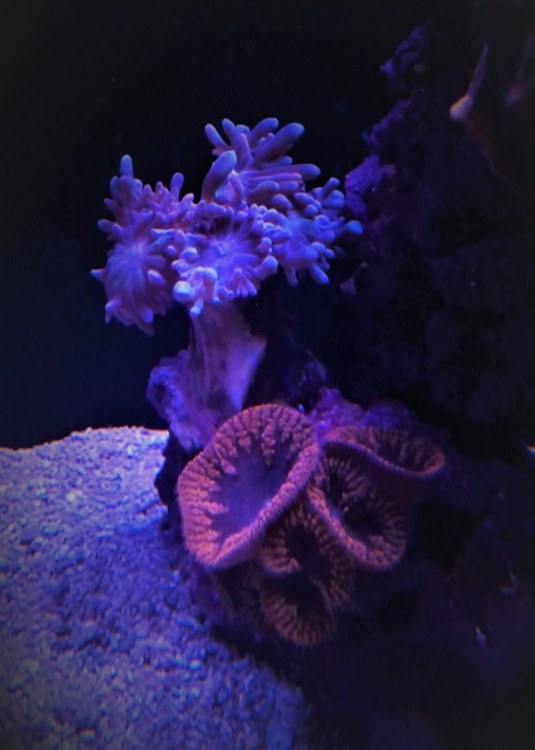TG Update:
Sometimes things can get mighty strange in a reef aquarium
Long story short, I had a funky alk test kit that was showing 9.5 dKh, but the actual level per the LFS and a second test kit showed 12.5 dKh (I was running this high level for well over a month, yikes!). On top of that, I just happened to be playing with lighting spectrum and intensity during this time, so there was bit of collateral damage:
Ponape and BOP Seriatoporas:

Fallen Horizons Leptoseris:

Having the Birdsnests bleach is expected as they are typically the first to show displeasure when something is amiss. The normally all orange Lepto's response was to have the most highly illuminated areas go black and then loose tissue, or where not quite so brightly lit, develop fluorescent green pigmentation.
On top of this (or because of it), when I tried to bring alk down to a more typical 9 dKh by consistently reducing my normal 70% Kalkwasser/30% RO top off, I had to reduce all the way to pure 100% RO to get any kind of reaction (nearly 2 weeks to get from 12.5 to 9 dKh!). Slow alk decrease response, likely due to corals/coralline showing reduced calcification. The main fix is to change lighting back to a 'known good spectrum and intensity' (from my log book), monitor parameters closely until kalkwasser/RO usage is back to normal again and make sure that sufficient iodine stays in the system as it can help corals recover from bleaching events.
Thought this was interesting. I cleaned the system and all equipment today. Within the pump's internals, I have noticed a purplish/reddish coloration over the past month or two (ever since I carbon dosed for two months). Definitely got my attention, and the impeller and Q-Tip below show the reddish bacteria (the brownish bacteria on the top is from the return outlet):

Ok, back to the glamour pics
This side wall is coming along. Just waiting for the Zoas to take off and fill out:

I removed a rogue Superman Rhodatis that was causing my Acans some grief and used the spot for this nice little two polyp orange Homophylllia bowerbanki:

The already old school 'Lunar Eclipse' Zoa. Within 15 min of setting in place this guy was already puffed up. I'd forgotten just how large these guys get! (the Sunny D's are 3/4" across). Praying that the Acan plays nice:

Sometimes things can get mighty strange in a reef aquarium
Long story short, I had a funky alk test kit that was showing 9.5 dKh, but the actual level per the LFS and a second test kit showed 12.5 dKh (I was running this high level for well over a month, yikes!). On top of that, I just happened to be playing with lighting spectrum and intensity during this time, so there was bit of collateral damage:
Ponape and BOP Seriatoporas:
Fallen Horizons Leptoseris:
Having the Birdsnests bleach is expected as they are typically the first to show displeasure when something is amiss. The normally all orange Lepto's response was to have the most highly illuminated areas go black and then loose tissue, or where not quite so brightly lit, develop fluorescent green pigmentation.
On top of this (or because of it), when I tried to bring alk down to a more typical 9 dKh by consistently reducing my normal 70% Kalkwasser/30% RO top off, I had to reduce all the way to pure 100% RO to get any kind of reaction (nearly 2 weeks to get from 12.5 to 9 dKh!). Slow alk decrease response, likely due to corals/coralline showing reduced calcification. The main fix is to change lighting back to a 'known good spectrum and intensity' (from my log book), monitor parameters closely until kalkwasser/RO usage is back to normal again and make sure that sufficient iodine stays in the system as it can help corals recover from bleaching events.
Thought this was interesting. I cleaned the system and all equipment today. Within the pump's internals, I have noticed a purplish/reddish coloration over the past month or two (ever since I carbon dosed for two months). Definitely got my attention, and the impeller and Q-Tip below show the reddish bacteria (the brownish bacteria on the top is from the return outlet):
Ok, back to the glamour pics
This side wall is coming along. Just waiting for the Zoas to take off and fill out:
I removed a rogue Superman Rhodatis that was causing my Acans some grief and used the spot for this nice little two polyp orange Homophylllia bowerbanki:
The already old school 'Lunar Eclipse' Zoa. Within 15 min of setting in place this guy was already puffed up. I'd forgotten just how large these guys get! (the Sunny D's are 3/4" across). Praying that the Acan plays nice:
Last edited:










